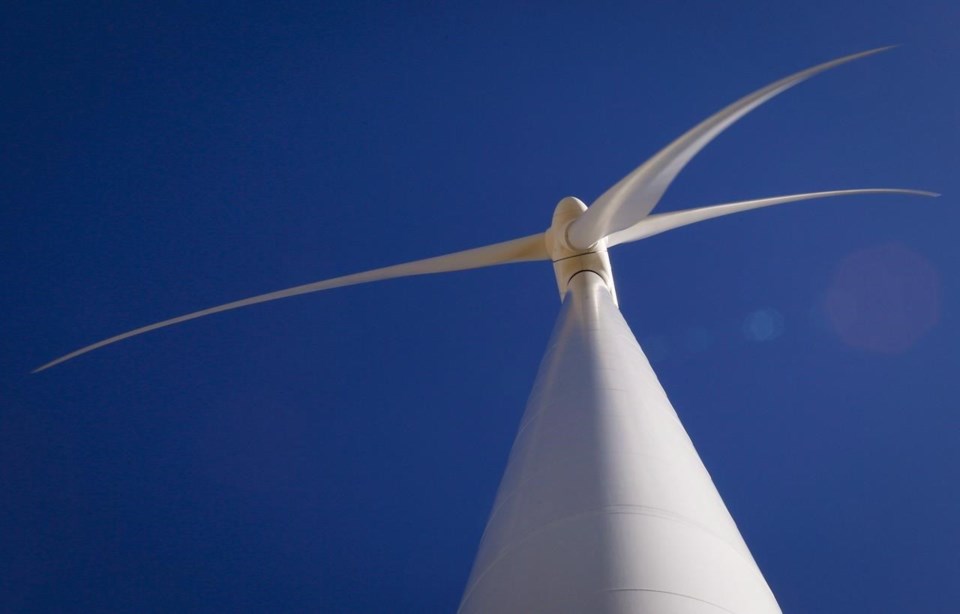YELLOWKNIFE — An energy-focused think tank says Indigenous energy sovereignty in Canada's North is "absolutely critical and fundamental" to addressing climate change, but more support is needed.
The Pembina Institute is criticizing the latest plan from the Northwest Territories to reduce greenhouse gas emissions, saying meaningful Indigenous engagement and partnerships should be a greater priority.
Earlier this month, the territory released a second three-year action plan under its 2030 energy strategy, detailing initiatives it says will reduce emissions by 51 kilotonnes by 2025, slightly below a previous target of 57 kilotonnes. The plan includes grants and incentives to save energy in buildings, support for electric vehicle charging stations and major infrastructure projects.
"We were just hoping to see a much more detailed plan and outreach strategy to really engage all the Indigenous communities on how they want to and can be involved in supporting the N.W.T. and leading their own energy reductions," said Dave Lovekin, Pembina Institute's director for renewables in remote communities.
"Indigenous people kind of have been there for time immemorial and they know what is needed for their communities," he said.
The territory's Department of Infrastructure said in a statement that community engagement, participation and empowerment is at the core of the energy strategy, and it sought input from Indigenous governments and organizations on the action plan. It added that the N.W.T. government "provides significant financial and technical support" to communities for energy planning.
The territory plans to review the strategy in 2023.
While the N.W.T. aims to reduce emissions 30 per cent below 2005 levels by 2030, Yukon plans to cut emissions up to 45 per cent below 2010 levels by that point and reach net-zero by 2050. Nunavut does not have specific emissions reduction targets, but has several renewable and energy-efficient projects in the works.
While the North accounts for a small per cent of Canada's total emissions, many communities are still reliant on diesel fuel for electricity. The region is also warming two to four times faster than the global average.
Indigenous governments and organizations are leading the way when it comes to transitioning to renewable energy sources across the North, Lovekin said, due in part to federal funding.
Indigenous-owned projects already lowering diesel emissions include the use of solar energy in Aklavik, N.W.T., and Old Crow, Yukon.
But barriers remain for many communities to get off diesel, ranging from the technical to bureaucratic.
"I think the biggest challenge that needs continuous and systemic support is just building up Indigenous energy champions," Lovekin said. "Really nurturing that relationship and really supporting Indigenous communities on capacity building."
In Lutsel K'e, N.W.T., a solar project started in 2016. The Lutsel K'e Dene First Nation said at the time it was the first community across the territories to produce its own power, signing a power purchasing agreement with the Northwest Territories Power Corporation.
Denesoline Corporation, the First Nation's financial arm, has been working to develop a hybrid wind and solar power plant in the community to further reduce reliance on diesel.
However, its chief executive officer said, following a study by the British Columbia Institute of Technology, that it's unclear whether the project will work and it's too financially risky. Ron Barlas said it is now investigating other options.
"The importance of transitioning off of diesel to reduce the carbon footprint on the environment is self-evident and has been our own independent goal ... consistent with Indigenous communities having control over their own generation," Barlas said in a statement.
"The challenge remains the lack of availability of economically and technically viable clean power plants or hybrid renewable energy systems and solutions."
Another challenge in the N.W.T. is that there's a 20 per cent cap on renewable energy generation in diesel-dependent communities to prevent system instability and limit revenue losses to the utility. A May 2021 report found that as of July 2020, nine communities had reached or exceeded that limit.
In Sanikiluaq, Nvt., the Nunavut Nukkiksautit Corporation, an Inuit-owned renewable energy developer, plans to install wind turbines to displace half the community's annual diesel use for electricity. Heather Shilton, director of the corporation, said one of the biggest hurdles has been negotiating a power purchasing agreement with the utility, a crucial step before construction can begin.
The Qulliq Energy Corporation, which is owned by the Nunavut government, received interim approval to implement an independent power producer policy in late September, but slow progress has delayed several renewable energy projects.
"Without that IPP program in place, we were kind of stuck," Shilton said. "We submitted our application as soon as that ministerial approval came out, but we're still not entirely sure about when we're going to be able to see that power purchase agreement."
Other Indigenous-led renewable energy initiatives in the works include solar projects in Invuik and Deline in N.W.T., and Beaver Creek, Yukon, and a wind energy project in Burwash Landing, Yukon.
This report by The Canadian Press was first published Dec. 10, 2022.
___
This story was produced with the financial assistance of the Meta and Canadian Press News Fellowship.
Emily Blake, The Canadian Press



